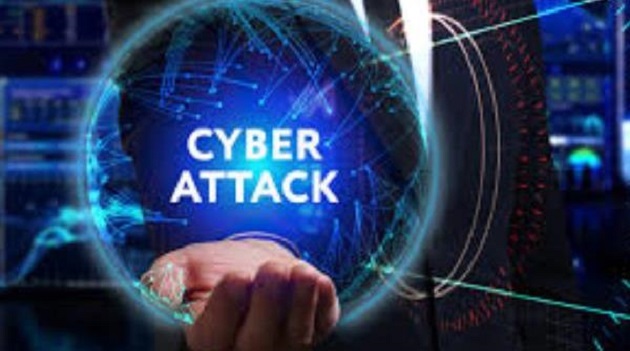E-Business
HDS Unveils Solutions to Free Data from Traditional Hardware
Hitachi Data Systems Corporation, a wholly owned subsidiary of Hitachi, Ltd., has made another leap forward in its technology leadership for delivering software-defined infrastructures that enable customers to simplify IT and free data from traditional hardware and location constraints, making it more accessible for all existing and new analytics-driven workloads.
With the newest additions to the Hitachi VSP family – the G200, G400, G600 and the upcoming G800, unveiled in Lagos on Tuesday, Hitachi Data Systems as an IT vendor addresses customer workload requirements from entry to the mainframe with a single software stack.
Extending the reach of powerful software capabilities that are built into Hitachi SVOS allows the entire VSP family to offer native heterogeneous storage virtualisation and multi-site active-active storage – as well as fully compatible data migration, replication and management.
Customers now have the ability to choose systems based on the necessary capacity, performance and price required to meet their business goals, not because of functional difference.
According to Ben Jooste, regional sales manager, Sub Saharan Africa, “To effectively unlock the value of a software-defined infrastructure, technology must simplify operations through automation, drive insight through better access to information, and improve agility through abstraction that turns fixed assets into flexible resources”.
Customers looking at smaller systems will now get access to the same virtualisation technology that has existed in prior HDS high-end systems that have achieved the highest overall product and use-case specific scores within Gartner’s Critical Capabilities for General-Purpose, High-End Storage Arrays1.
Best of Breed Converged Platforms for Any Workload: The Hitachi Unified Compute Platform (UCP) portfolio has been expanded with new hyper-converged and converged infrastructure models that now cover customers’ needs to rapidly and more easily support core to edge IT workloads.
The latest additions to the UCP family include the hyper-converged Hitachi UCP 1000 for VMware EVO:RAIL, and the converged Hitachi UCP 2000, both use new rack servers and target small to medium or remote or branch office environments.
The Hitachi UCP 6000 converged model integrates the recently launched Hitachi CB 2500 blade servers, and delivers unmatched price-performance for mission critical workloads.
Creating the Active Data Lake for Big Data Analytics: The hyper-converged architecture of the new Hitachi Hyper Scale-Out Platform (HSP) provides cost-effective compute performance and on-demand capacity.
Capable of ingesting massive amounts of mixed data types across a distributed, clustered architecture, the simple, automated management of HSP allows elastic data growth by using Hitachi file system technology with open source management and virtualisation software.
HSP is the ideal scale-out platform for Hadoop environments, allowing users to analyze data in place and eliminate the need to move large data sets to perform analytics functions for big data.
Automated, Application-Led Storage Provisioning and Data Protection: Hitachi Automation Director, a new application that works with the Hitachi Command Suite management infrastructure, provides configurable best-practice-based service templates for simple, application-specific provisioning of storage resources to databases, applications and VDI environments.
Built-in support for role-based access control means that, once established, these templates can be used by business users in a move to self-service provisioning.
As a lightweight complement to Hitachi Command Suite, Hitachi Infrastructure Director is a new storage configuration and management application that uses the new VSP systems’ APIs to provide simple, intuitive management, guided by a built-in recommendation engine, for environments in which simplicity is more important than the need for manual control of every detail.
Hitachi Infrastructure Director gives users the power to direct simplified management operations to rapidly deploy new storage systems and services for the new models in the VSP family.
“For us to truly unlock the value of software-defined storage, the chosen technology must simplify operations through automation, drive insight for more flexible and robust access to data and create agility through abstraction by making fixed resources flexible. Hitachi offers a portfolio to make our goal of a software-defined infrastructure a reality,” said Darius Harris, senior IT manager, Nedbank, South Africa. “In a big move toward this goal, Hitachi is extending its Storage Virtualisation Operating System (SVOS) to an expanded Virtual Storage Platform (VSP) family, essentially bringing the power and potential of storage virtualisation within reach to organisations like ours.”
Hitachi Data Systems, a wholly owned subsidiary of Hitachi, Ltd., builds information management and Social Innovation solutions that help businesses succeed and societies be safer, healthier and smarter. We focus on big data that offers real value – what we call the Internet of Things that matter.
Its IT infrastructure, analytics, content and cloud solutions and services drive strategic management and analysis of the world’s data.
Only Hitachi Data Systems integrates the best information technology and operational technology from across the Hitachi family of companies to deliver the exceptional insight that business and society need to transform and thrive.
E-Business
Nigeria Targeted with 4,622 Cyber-attacks Per Week in December 2025

In December 2025, organisations globally faced sustained cyber pressure, as the average number of cyber-attacks per organisation per week reached 2 027, a 1% increase from the previous month and a 9% increase from December 2024.

This is according to December 2025 Global Cyber Attack Statistics by Check Point Research, the threat intelligence arm of Check Point Software Technologies.
According to the statistics, Latin America was the hardest hit, with companies experiencing an average of 3 065 cyber-attacks per week, a 26% year-over-year increase.
In contrast, Africa saw a decline in attacks, with Nigeria (4 622 attacks per week) and Angola (4 002 attacks per week) being the most targeted countries on the continent.
The report’s findings highlight the evolving cyber threat landscape, with ransomware and GenAI-driven data risks posing significant challenges to companies worldwide.
Ransomware attacks jumped 60% year over year, with 945 publicly reported incidents in December. Qilin was the most active ransomware operator, responsible for 18% of publicly disclosed attacks.
“Ransomware continues to scale through industrialised operations, while unmanaged GenAI usage is creating widespread data exposure at enterprise level,” said Omer Dembinsky, data research manager at Check Point Research.
The report noted the education sector was the most targeted industry globally, with 4 349 cyber attacks per week; followed by government (2 666 attacks per week); and associations and non-profits (2 509 attacks per week).
The widespread adoption of GenAI tools has introduced new cyber security risks, with one in 27 GenAI prompts posing a high risk of sensitive data leakage.
Experts warn that companies must prioritise prevention-first security, real-time AI threat intelligence and strong governance over AI tools to mitigate these risks.
Hendrik de Bruin, head of security consulting at Check Point Software, added: “Strengthening ransomware resilience, deploying AI-powered prevention and enforcing clear GenAI governance will be critical to reducing cyber risk in the year ahead.”
E-Business
Half of Global Companies Build SOCs to Enhance Cybersecurity, with a Focus on Human Expertise

Among the primary reasons for establishing a Security Operations Center (SOC) are strengthening cybersecurity posture, enabling faster detection and response and gaining a competitive edge.

Interestingly, despite the increasing demand for automated cybersecurity solutions, businesses rely on skilled security professionals to make key decisions, as human expertise remains essential for effective security management.
A Security Operations Center (SOC) is a dedicated organisational unit responsible for continuous monitoring and safeguarding of a company’s IT infrastructure. Its core mission is to proactively detect, analyse and respond to cybersecurity threats.
To identify the main drivers, strategic priorities, and potential challenges in SOC planning and implementation, Kaspersky has conducted a comprehensive global study involving senior IT security specialists, managers and directors from companies with 500 or more employees.
All participants operate without a SOC but have plans to establish one in the near future. The study spans 16 countries across APAC, META, LATAM, Europe, and Russia, providing valuable insights into the emerging trends and best practices in SOC development worldwide.
The findings of the research reveal that 50% of companies intend to establish SOCs to strengthen their cybersecurity posture, and 45% are motivated by the need to address increasingly sophisticated and dangerous threats.
Other drivers include budget optimisation, the necessity for faster detection and response, and the expansion of software, endpoints and user devices – factors that demand more comprehensive and layered security measures.
These are cited by 41% of organisations. Additionally, 40% seek better protection of confidential information, 39% aim to meet regulatory requirements and one-third (33%) expect SOC capabilities to provide a competitive edge. Larger enterprises tend to cite each of these reasons more often, reflecting the broader operational and regulatory pressures they experience.
Continuous monitoring becomes the leading SOC requirement
Among the key functions organisations plan to delegate, 24/7 security monitoring leads at 54%. This around-the-clock vigilance enables early detection of anomalies, prevents escalation and sustains cyber resilience in real-time. This demand highlights a strategic requirement for proactive risk management, as organisations aim to defend against persistent threats that can strike at any moment.
Companies intending to fully outsource SOC operations show a stronger interest in applying “lessons learned” methodologies, whereas those developing internal SOCs focus more on access management to maintain tighter control.
Human expertise drives SOC technology choices
While SOCs use advanced technology, the choices made by organisations show that human analysts are very important. Among the solutions that organisations plan to include in SOC are – Threat Intelligence Platforms (48%), Endpoint Detection and Response (42%) and Security Information and Event Management systems (40%) – sophisticated solutions that automate data collection and reduce operational load, however, they depend heavily on skilled security professionals who provide critical context, interpret complex findings and make final decisions when guiding appropriate responses.
Other solutions chosen include Extended Detection and Response (38%), Network Detection and Response (37%) and Managed Detection and Response (33%). Large enterprises tend to adopt more technologies (5.5 per SOC on average), while smaller ones integrate fewer (3.8).
“To successfully build a SOC, companies must prioritise not only the right mix of technology but also the careful planning of processes, clear goal-setting and effective resource distribution.
“Well-defined workflows and continuous improvement are essential to ensure that human analysts can focus on critical tasks, making the SOC a proactive and adaptable component of their cybersecurity strategy,” comments Roman Nazarov, Head of SOC Consulting at Kaspersky.
E-Business
Nigerian Terra Industries Secures $11.8m for Expansion

Terra Industries, a Nigerian defence technology startup, has raised $11.75 million to expand its development of defensive systems that protect critical facilities across Africa.

The fundraising round was led by Silicon Valley venture firm 8VC, which was founded by Palantir co-founder Joe Lonsdale.
Other investors in the round include Valour Equity Partners, Lux Capital, SV Angel, and Nova Global, as well as African-focused funds Tofino Capital, Kaleo Ventures, and DFS Lab.
Terra Industries, founded in Abuja by Nathan Nwachuku and Maxwell Maduka, provides multi-domain security solutions for both air and land. Its solutions are intended to detect and respond to threats including terrorism, sabotage, and armed attacks on infrastructure.
The company’s product portfolio includes surveillance drones, ground-based robotic systems, and fixed monitoring towers deployed around sensitive locations.
Co-founder and CEO Nathan Nwachuku said the company has now fully embraced its identity as a defence-focused startup, citing the growing urgency of security challenges across Africa.
He said safeguarding critical infrastructure from terrorist threats has become unavoidable.
Nwachuku argues that protecting Africa’s infrastructure requires a different approach, one that combines local manufacturing, end-to-end system control, and software capable of independently identifying and responding to threats over large areas.
The company aims to position itself as a defence prime, similar to the role played by firms such as Anduril Industries and Palantir in the United States.
Nwachuku also disclosed that the company had earlier raised $800,000 in pre-seed funding.
With the new funding, Terra plans to increase manufacturing capacity within Africa, establish additional defence production facilities, and expand its artificial intelligence and software teams.
While software offices are planned for San Francisco and London, the company said manufacturing operations will remain on the continent.

 E-Financial3 days ago
E-Financial3 days agoAngst as FG Demands 7.5 Percent VAT on Mobile Bank Transfers, USSD

 News3 days ago
News3 days agoMoniepoint Launches Second Cohort of DreamDevs Initiative to Double Down on Africa’s Tech Talent Pipeline

 E-Financial3 days ago
E-Financial3 days agoThe Missing Pieces in Nigeria’s Banking Recapitalisation

 E-Financial3 days ago
E-Financial3 days agoNGX lists 3.156bn UBA shares, boosting capital to N513Bn

 Telecom3 days ago
Telecom3 days agoGlo Unveils Immersive Gaming Experience, Travel Saga

 E-Financial2 days ago
E-Financial2 days agoPaystack Expands Beyond Payments into Banking

 E-Business3 days ago
E-Business3 days agoHalf of Global Companies Build SOCs to Enhance Cybersecurity, with a Focus on Human Expertise

 General News3 days ago
General News3 days agoNITDA DG Reaffirms Nigeria–U.S. Partnership on Data Privacy, AI and Cybersecurity















